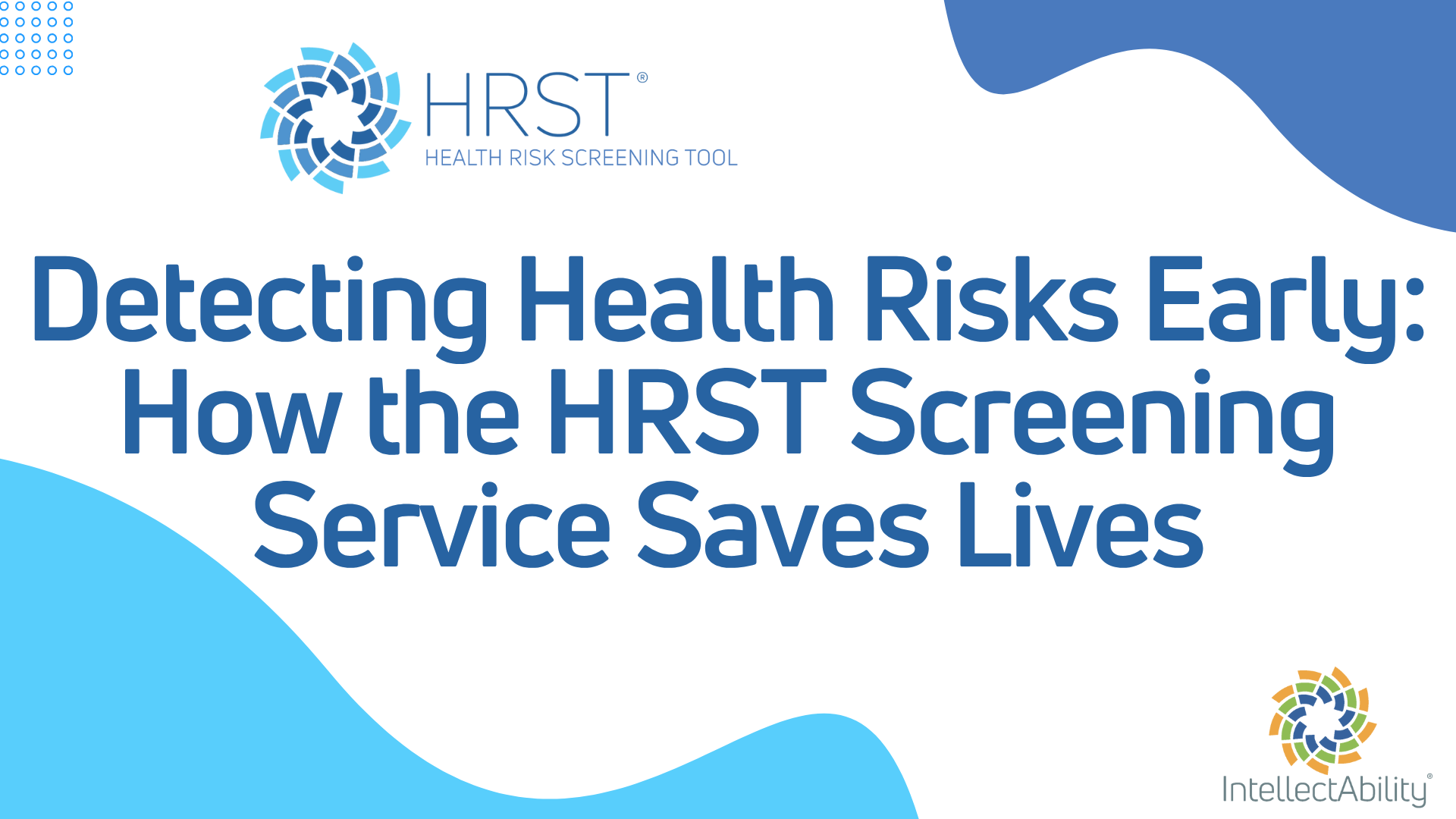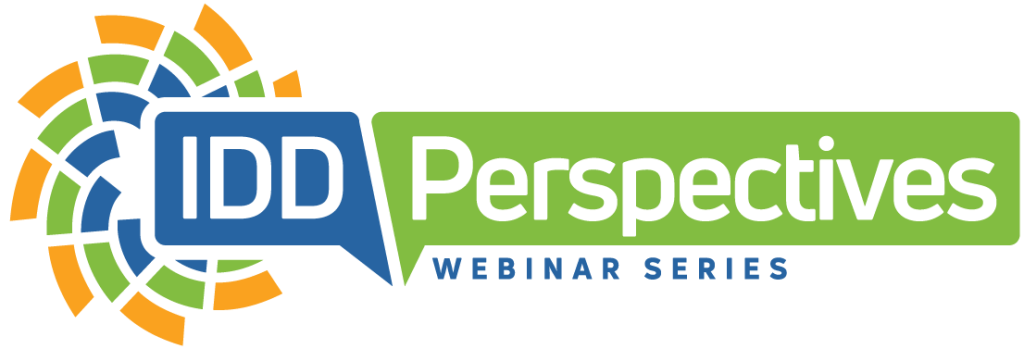
Detecting Health Risks Early: How the HRST® Screening Service Saves Lives
For people with intellectual and developmental disabilities (IDD) and other complex support needs, small changes in health can quickly become life-threatening if overlooked.
Intellectual and developmental disabilities are present from birth and can affect multiple body parts and the individual’s physical development. These disabilities impact adaptive behavior, life skills, and include everyday social skills necessary for independent living. IDDs are a broader category that includes other disabilities and disorders, such as cerebral palsy, Down syndrome, and autism; these are examples of conditions that may co-occur and require tailored support.
That’s why early detection of health risks is critical, and why IntellectAbility’s Health Risk Screening Tool (HRST) has become an essential resource for agencies, families, and providers nationwide.
What Is the HRST?
The HRST is a validated, web-based, HIPAA-compliant screening tool designed to detect health destabilization early in at-risk populations. It looks for risks across a wide range of conditions, including IDD, aging-related disabilities, mental health, traumatic brain injury, and physical disabilities.
The tool uses a 22-item rating scale that covers five key categories. The HRST assigns scores to 22 health and behaviorally related rating items, and the total points result determines the health care level:
- Functional Status: everyday activities such as eating, walking, and toileting; the tool assesses the individual’s ability to perform daily tasks, problem solve, and other skills necessary for independent living
- Behavior: risks related to self-abuse, aggression, or communication
- Physiological: body systems most impacted by disabilities and chronic conditions
- Safety: injuries, falls, and other safety concerns
- Frequency of Services: how often someone accesses healthcare systems
The result is an objective Health Care Level (HCL) score, ranging from 1 (low risk) to 6 (highest risk). The lowest risk is Level 1, and each level corresponds to an associated degree of health concern based on total points. This score helps supporters take proactive steps before risks escalate.
Why It Matters
The HRST isn’t just a checklist—it’s a proven predictor of mortality. Research spanning nearly a decade shows a direct correlation between increasing HRST scores and higher mortality rates. In other words, the tool provides measurable insight into tangible health outcomes. The HRST uses data to detect health risks and identify health concerns, supporting data-driven decision-making. It is important to update the HRST whenever significant changes occur in a person’s life, such as injuries, falls, or health emergencies, to ensure accurate risk assessment and care planning.
By using the HRST, families, direct support professionals (DSPs), and case managers gain:
- Early detection and prevention of health risks
- Clear action steps for interventions and supports
- Service and training considerations tailored to each person
- Empowerment when advocating with healthcare professionals
- Better continuity of care and person-centered planning
The involvement of supporters and providers in the screening process, along with access to resources and the availability of assistance, ensures comprehensive support and effective implementation.
Clinical review is a key part of the HRST process, with clinical reviewers such as nurses ensuring the quality and accuracy of screening results through formal evaluation. Researchers have validated the HRST through studies and ongoing evaluation, further supporting its credibility and effectiveness.
As one RN described: “People are alive today because of the HRST. It gives us a snapshot of ongoing health status and helps us act before small issues become crises.”
The HRST Virtual Screening Services
Historically, HRST Screenings were conducted only by direct support staff or clinicians in support settings.
The traditional HRST service is a comprehensive offering that includes the Health Risk Screening Tool, training, implementation, ongoing support, and data integration to ensure effective use and compliance.
The HRST web-based application enables providers to complete screenings online, ensuring secure and efficient data management, as well as interoperability with other health systems. Assistance is available to users throughout the screening process, providing support for login, technical, or clinical concerns. Providers play a key role in implementing and managing the HRST service within their organizations.
As a value-added service, IntellectAbility now offers a Virtual Screening Service that enables providers and agencies to leverage the trained staff at IntellectAbility to conduct screenings virtually.
This service includes virtual HRST screenings with trained IntellectAbility HRST Screeners, who will guide the process and handle the full screening from start to finish.
This service includes initial screenings, episodic screenings, and annual updates.
What to Expect During a Screening
HRST screenings are conducted virtually through Microsoft Teams. An IntellectAbility-trained HRST Screener leads the process by asking a structured series of yes/no questions. Respondents should be people who know the individual well and can provide accurate information about their health and daily life. Support people who are familiar with the individual can also assist in the screening process. These supporters do not need clinical qualifications and can play a crucial role in supporting the individual across different environments.
To ensure accuracy, it’s important to prepare before the screening by gathering:
- Current diagnoses
- A full list of medications (including vitamins, supplements, and any recent changes)
- Relevant health history (seizures, falls, hospitalizations, behavioral supports, etc.)
- Information on daily living supports such as eating, toileting, and mobility
- Assessment of other skills and life skills, including intellectual functioning and adaptive behavior, which are important for independent functioning and quality of life
At the end of the session, the Screener will share the Health Care Level and recommended service and training considerations, providing support teams with a clear roadmap for action.
A Tool with Proven Impact
The HRST was first developed in the early 1990s to help people with disabilities safely transition from institutions into the community. Since then, it has been used to screen over 130,000 people across multiple states and agencies. Today, it remains the only validated health risk screening tool designed specifically for people with intellectual or developmental disabilities (IDD).
The HRST can detect health risks associated with other conditions, including behavioral health and behavioral disorders, which may affect individuals with intellectual or developmental disabilities. The tool is also used in situations where these disabilities are present and can impact various aspects of a person’s life.
Its purpose has always been the same: to detect risks early, prevent avoidable health crises, and support safer, healthier lives.
Additional Resources
- To learn more about the HRST, download our HRST Brochure.
- To see the impact the HRST made with the Ohio Department of Developmental Disabilities, download our latest white paper, The Impact of the Health Risk Screening Tool (HRST) on an Ohio IDD Population.
- To discover the cost-saving benefits of the HRST, download the Optimizing HCBS & Healthcare Spending for People with IDD During Medicaid Cuts white paper.
Want to learn more or schedule a screening?
Contact us at HRSTScreeningService@ReplacingRisk.com or visit https://replacingrisk.com/hrst-virtual-screening-service/




